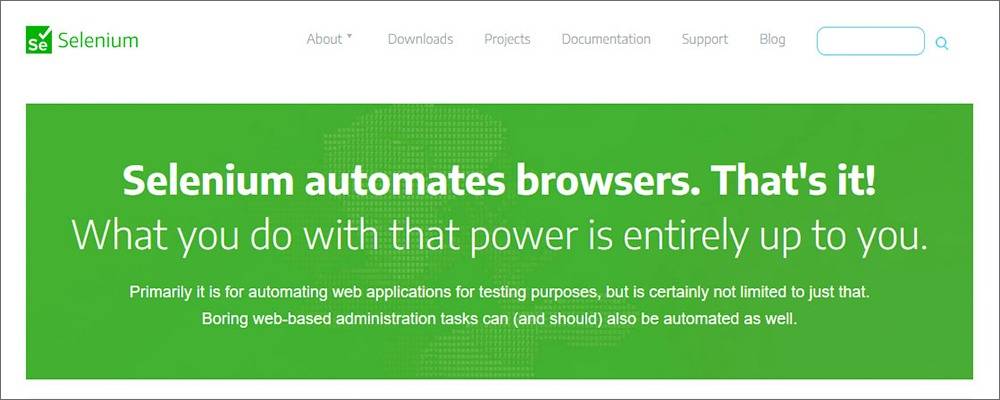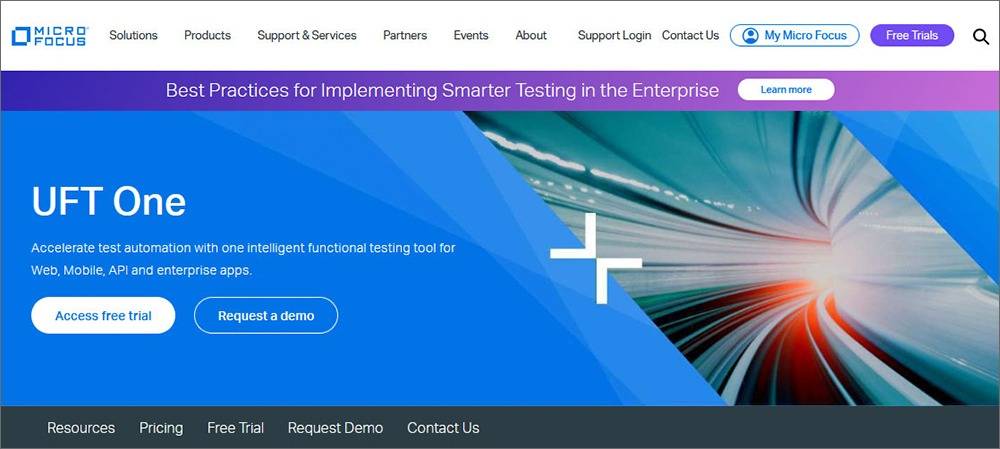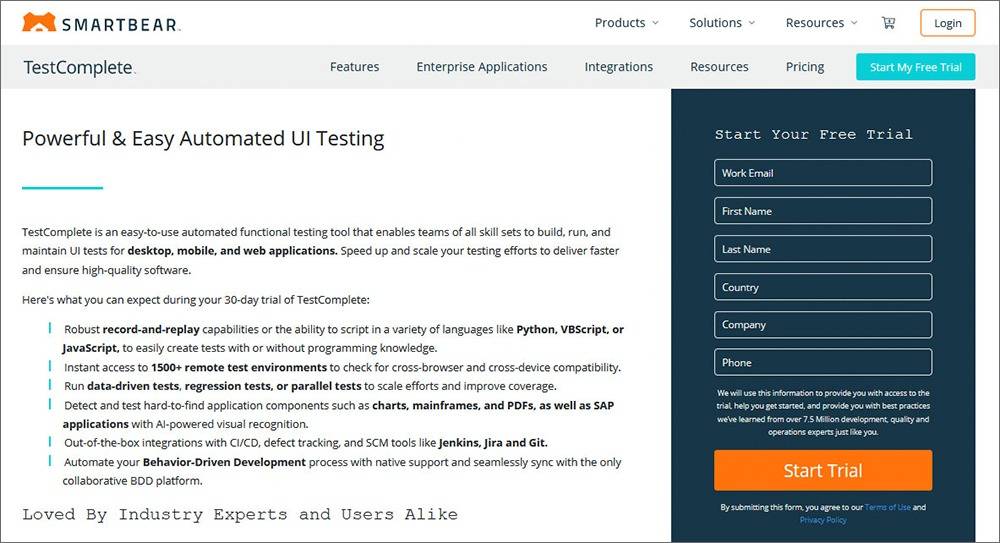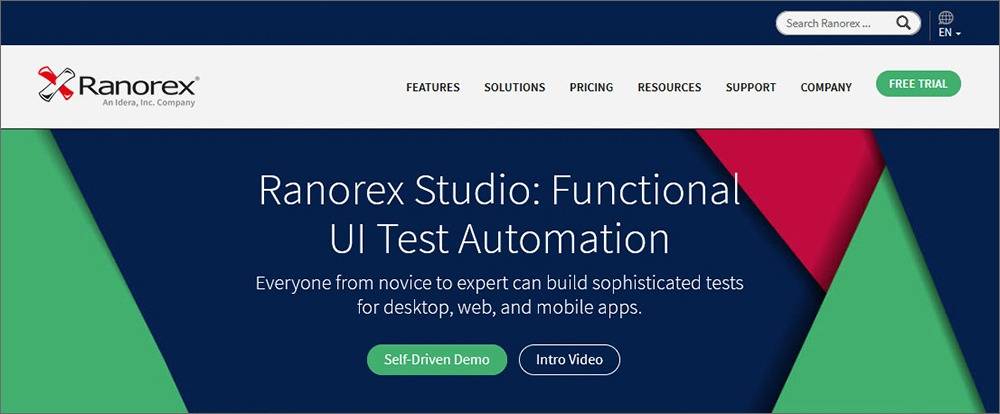Automation testing is no longer the pricey, demanding process only big-time software development companies can afford. The current generation of automation testing tools has plenty of affordable tools for tasks ranging from creating a build and gathering requirements to test analysis and execution.
Automation software testing allows greater test accuracy and coverage than manual testing. It also reduces the workload of the QA (Quality Assurance) team, eliminates human error, and saves both time and money.
The benefits of automation testing tools are even more pronounced when they’re used in conjunction with a test management tool. Test management tools such as Kualitee standardize day-to-day testing processes, increase test reusability and make test cases, their requirements, and errors more visible.
While Kualitee isn’t capable of automation testing on its own, it can work seamlessly with automation testing tools such as Selenium, allowing you to execute test management and reporting using a single window.
How to find the right automation testing tool for your project?
There are dozens of popular automation testing tools in the market for every testing purpose. In order to identify the best tool, you must:
Analyze your project needs
Develop an in-depth understanding of your project and its scope. Gauge your team’s expertise in the software’s coding language. This will help you choose between automation tools with varying degrees of simplicity for script development and test execution.
Identifying the number of test cases that require automation will help you compare different automation tools. This will also help you assess a tool’s ROI (Return on investment) for your project’s needs.
Determine the level of technical support you need
Look into the kind of support that the automation testing tool extends offer before making a final pick. Evaluate whether your team can manage to sort out critical technical issues with that level of assistance. Don’t forget to check out user reviews of an automation testing tool’s support team.
Compare the costs
It’s pretty hard to find free software but pricing should never be the sole deciding factor for choosing an automation testing tool. It’s still essential you evaluate the difference between the costs of all the testing tools on your shortlist. Compare the different tools’ advantages and your project’s overall budget before making the final call.
Top 5 automation testing tools
Based on efficiency, user-friendliness, reviews, and pricing, these are our top 5 automation testing tools:
1. Selenium

Selenium is an automation testing tool that primarily helps regulate the test cycle from end to end. It supports automated testing of software’s functional features. Selenium is an open-source automation testing product that supports a wide range of capabilities.
It has a free WebDriver component that communicates directly with the browser, utilizing native compatibility to enhance automation. It can be integrated with Kualitee to achieve greater test coverage and reusability and quicker execution of test cases via a single window.
Best features:
- Selenium has a simple, easy-to-use UI.
- It includes support for multiple programming languages, including PHP, Python, Pearl, .NET, and Ruby.
- It allows for easy cloud integration.
- It allows cross-device software testing.
Advantages of using Selenium
- Selenium’s record and playback style features allow you to test software without learning its IDE.
- Individuals with basic knowledge of Java can easily use Selenium’s WebDriver and other suite components.
- Selenium supports reusable scripts which expedite functional and regression testing activities.
2. HPE Unified Functional Testing

Formerly known as HP QuickTest Professional, HPE UFT facilitates easy, efficient testing automation for regression, service, and functional testing. It uses Visual Basic Scripting Edition as its base scripting language. It has a powerful Object Identification mechanism. It’s also easy enough to be understood and used by non-programmers.
Best features
- HPE UFT has a unique Welcome Page that features a list of guidelines for testing procedures. This includes information on data and keyword-driven testing, software quality assurance and business components. You can easily track the recently opened files and access frequently used test applications through this screen.
- It includes Qt and Flex add-ins to help test the graphical user interface of Qt and Flex applications.
- HPE UFT makes use of Insight Recording via a dedicated toolbar. This powerful image and object reorganization feature makes it easier to identify applications and objects running on a remote system.
Advantages of using HPE Unified Functional Testing
- It allows you to run tests on both front-end as well as back-end service elements of a software application.
- It allows for quick, dependable parallel testing. It also supports cloud-based deployment and cross-browser coverage, allowing you to test more in a shorter span.
- It allows for continuous testing with CICD integration with a wide range of servers, including Azure DevOps and Jenkins. This helps you get rid of bottlenecks and achieve greater efficiency throughout the test cycle.
3. TestComplete

TestComplete is a user-friendly GUI (Graphical User Interface) automation testing tool. Its powerful object recognition engine allows for testing desktop, mobile, and web apps in a quick, flexible way. It has an open COM architecture that enables you to install your favorite plugins. In addition, you can also integrate tools and controls from a wide range of sources.
Best features
- It supports a large number of popular desktop applications such as Java, Windows 10, .Net, and WPF.
- It enables the creation of reusable test scripts for popular web applications such as Angular and React.
- It supports over 2050 different platform and browser configurations.
- It supports all the popular scripting languages, including Jscript, Python, C++Script, and – JavaScript.
Advantages of using TestComplete
- You can extend your product’s functionality by creating custom plugins for your needs. TestComplete has an intelligent repository and supports more than 500 different controls. This helps make your tests more scalable and efficient.
- With TestComplete, there’s no need for jailbreaking your mobile devices for UI testing. You can create custom UI tests and automate them on both physical and virtual Android and iOS devices.
- It allows you to reuse test scripts. It also allows integration with Continuous Integration Tools such as Jenkins, Buildbot, and Buddy. This results in accelerated testing and quicker delivery.
4. Ranorex

Ranorex is an automated testing tool that enables the automation of regression and functional testing. It’s user-friendly to suit the needs of novice testers but packs enough high-end features to be recommended by the pros. It enables you to develop and run reliable automated tests both with and without coding.
Best Features
- Integrated with popular DevOps such as Jira. Allows for automated tracking of bugs.
- Powerful and reliable object identification tools which are capable of handling the most complex UIs.
- Ability to create an automation module through coding as well as codeless capture-and-play functionality.
Advantages of using Ranorex
- Ranorex offers excellent, flexible learning aids. These include live as well as on-demand tutorials and webinars. You can also connect with Ranorex’s training partners for both online and onsite training courses.
- Ranorex’s Help Center is a vast resource for FAQs, best practices, and expert tips. Its user forum is another quick, easy-to-access source of information and technical troubleshooting tips.
- Its flexible, user-friendly API (Application Programming Interface) enables easy integration with CI (Continuous Integration) server and defect tracking mechanism. This boosts the testing speed and enables accelerated delivery.
5. TestingWhiz

TestingWhiz is one the most popular and well-rounded automated software testing tools of the day. Its Enterprise edition features automated solutions for web and software testing and Quality Assurance (QA testing). It’s highly efficient at running cross-browser tests, for database testing and mobile app testing.
Best features:
- TestingWhiz allows for more specific data and keyword-driven testing.
- It allows for integration with Mantis, FogBugz, Jira, TFS, and other popular bug tracking tools.
- It allows for integration with a wide range of popular test management tools. The list of applicable tools includes Microsoft VSTS, HP Quality Center, TestRail, and Zephyr.
- It offers GraphQL support for microservice architecture.
Advantages of using TestingWhiz
- It allows you to test native, mobile, and hybrid web apps on both simulators and actual mobile devices.
- TestingWhiz supports all the popular browsers, including Mozilla Firefox, Opera, Internet Explorer, and Google Chrome. This allows you to test your applications out on multiple browsers.
- It allows you to automate the act of regression testing in a quick, simple manner. Just record your test steps, use the test editor to modify the steps, and then reapply.
The little time devoted towards comparing automation testing tools, evaluating their utility can save you lots of time and money. Make sure to consider using a test management tool such as Kualitee to achieve greater, one-window control, accuracy and efficiency for both functional and automation testing tasks.


























